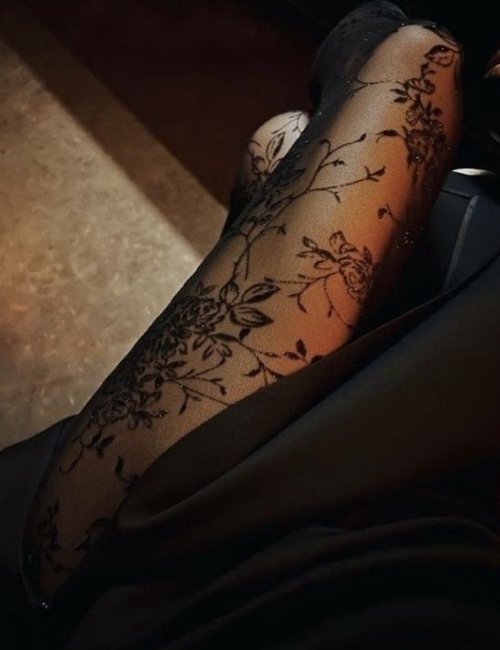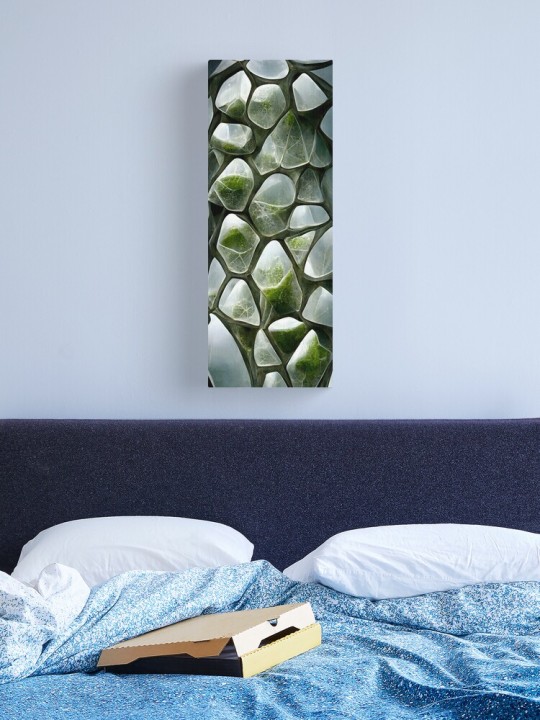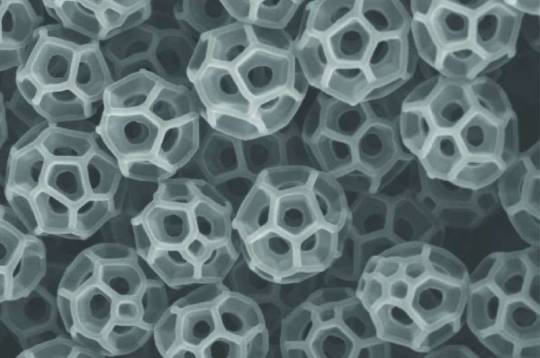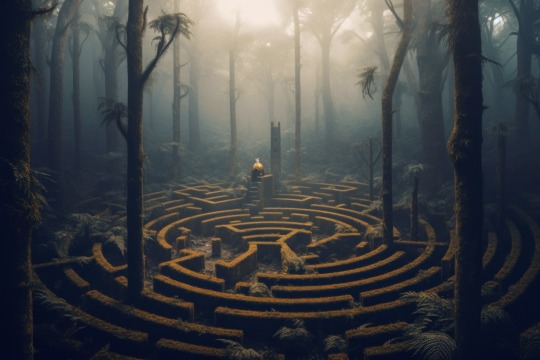#bioinspiration
Text
Unlocking the secrets of natural materials
New Post has been published on https://thedigitalinsider.com/unlocking-the-secrets-of-natural-materials/
Unlocking the secrets of natural materials


Growing up in Milan, Benedetto Marelli liked figuring out how things worked. He repaired broken devices simply to have the opportunity to take them apart and put them together again. Also, from a young age, he had a strong desire to make a positive impact on the world. Enrolling at the Polytechnic University of Milan, he chose to study engineering.
“Engineering seemed like the right fit to fulfill my passions at the intersection of discovering how the world works, together with understanding the rules of nature and harnessing this knowledge to create something new that could positively impact our society,” says Marelli, MIT’s Paul M. Cook Career Development Associate Professor of Civil and Environmental Engineering.
Marelli decided to focus on biomedical engineering, which at the time was the closest thing available to biological engineering. “I liked the idea of pursuing studies that provided me a background to engineer life,” in order to improve human health and agriculture, he says.
Marelli went on to earn a PhD in materials science and engineering at McGill University and then worked in Tufts University’s biomaterials Silklab as a postdoc. After his postdoc, Marelli was drawn to MIT’s Department of Civil and Environmental in large part because of the work of Markus Buehler, MIT’s McAfee Professor of Engineering, who studies how to design new materials by understanding the architecture of natural ones.
“This resonated with my training and idea of using nature’s building blocks to build a more sustainable society,” Marelli says. “It was a big leap forward for me to go from biomedical engineering to civil and environmental engineering. It meant completely changing my community, understanding what I could teach and how to mentor students in a new engineering branch. As Markus is working with silk to study how to engineer better materials, this made me see a clear connection with what I was doing and what I could be doing. I consider him one of my mentors here at MIT and was fortunate to end up collaborating with him.”
Marelli’s research is aimed at mitigating several pressing global problems, he says.
“Boosting food production to provide food security to an ever-increasing population, soil restoration, decreasing the environmental impact of fertilizers, and addressing stressors coming from climate change are societal challenges that need the development of rapidly scalable and deployable technologies,” he says.
Marelli and his fellow researchers have developed coatings derived from natural silk that extend the shelf life of food, deliver biofertilizers to seeds planted in salty, unproductive soils, and allow seeds to establish healthier plants and increase crop yield in drought-stricken lands. The technologies have performed well in field tests being conducted in Morocco in collaboration with the Mohammed VI Polytechnic University in Ben Guerir, according to Marelli, and offer much potential.
“I believe that with this technology, together with the common efforts shared by the MIT PIs participating in the Climate Grand Challenge on Revolutionizing Agriculture, we have a real opportunity to positively impact planetary health and find new solutions that work in both rural settings and highly modernized agricultural fields,” says Marelli, who recently earned tenure.
As a researcher and entrepreneur with about 20 patents to his name and awards including a National Science Foundation CAREER award, the Presidential Early Career Award for Scientists and Engineers award, and the Ole Madsen Mentoring Award, Marelli says that in general his insights into structural proteins — and how to use that understanding to manufacture advanced materials at multiple scales — are among his proudest achievements.
More specifically, Marelli cites one of his breakthroughs involving a strawberry. Having dipped the berry in an odorless, tasteless edible silk suspension as part of a cooking contest held in his postdoctoral lab, he accidentally left it on his bench, only to find a week or so later that it had been well-preserved.
“The coating of the strawberry to increase its shelf life is difficult to beat when it comes to inspiring people that natural polymers can serve as technical materials that can positively impact our society” by lessening food waste and the need for energy-intensive refrigerated shipping, Marelli says.
When Marelli won the BioInnovation Institute and Science Prize for Innovation in 2022, he told the journal Science that he thinks students should be encouraged to choose an entrepreneurial path. He acknowledged the steepness of the learning curve of being an entrepreneur but also pointed out how the impact of research can be exponentially increased.
He expanded on this idea more recently.
“I believe an increasing number of academics and graduate students should try to get their hands ‘dirty’ with entrepreneurial efforts. We live in a time where academics are called to have a tangible impact on our society, and translating what we study in our labs is clearly a good way to employ our students and enhance the global effort to develop new technology that can make our society more sustainable and equitable,” Marelli says.
Referring to a spinoff company, Mori, that grew out of the coated strawberry discovery and that develops silk-based products to preserve a wide range of perishable foods, Marelli says he finds it very satisfying to know that Mori has a product on the market that came out of his research efforts — and that 80 people are working to translate the discovery from “lab to fork.”
“Knowing that the technology can move the needle in crises such as food waste and food-related environmental impact is the highest reward of all,” he says.
Marelli says he tells students who are seeking solutions to extremely complicated problems to come up with one solution, “however crazy it might be,” and then do an extensive literature review to see what other researchers have done and whether “there is any hint that points toward developing their solution.”
“Once we understand the feasibility, I typically work with them to simplify it as much as we can, and then to break down the problem in small parts that are addressable in series and/or in parallel,” Marelli says.
That process of discovery is ongoing. Asked which of his technologies will have the greatest impact on the world, Marelli says, “I’d like to think it’s the ones that still need to be discovered.”
#2022#advanced materials#agriculture#architecture#background#Bioinspiration#Biological engineering#Building#career#career development#challenge#Civil and environmental engineering#climate#climate change#coatings#Collaboration#Community#cooking#Design#development#devices#energy#Engineer#engineering#engineers#Environmental#environmental impact#Faculty#Food#food production
2 notes
·
View notes
Text
Bioinspiration in Ocean Conservation: Learning from Nature's Solutions
Nature has been honing its strategies for millions of years, adapting to the challenges of the natural world. In the realm of ocean conservation, scientists and researchers are increasingly turning to nature for inspiration, seeking innovative solutions derived from marine organisms and ecosystems. This approach, known as bioinspiration or biomimicry, holds tremendous potential for addressing the…

View On WordPress
#aquaculture#biodegradable#bioinspiration#biomimicry#coral reef restoration#marine ecosystems#marine life#marine wildlife#ocean#ocean ecosystems#ocean farming#tidal energy
3 notes
·
View notes
Text
Revolutionizing Wind Energy: Bio-Inspired Blade Design
Harnessing nature's efficiency, our team introduces bio-inspired wind turbine blades modeled after the wings of birds and the fins of whales. By mimicking the aerodynamic principles found in nature, we aim to significantly enhance wind turbine performance, maximizing energy output while minimizing structural fatigue.
Egemen Mustafa Şener

0 notes
Text
• BIOINSPIRATION / BIOMIMÉTISME
Exposition "Mimèsis. Un design du vivant" - Centre Pompidou Metz (2022-23)
Exposition "La fabrique du vivant" - Centre Pompidou Paris (2019)
Ceebios - Centre d'études et d'expertises en biomimétisme
article sur Le Monde.fr : Le biomimétisme, ou comment s'inspirer de la nature plutôt que la détruire (2016)
Bioinspire-Muséum
5 technologies françaises innovantes inspirées par le biomimétisme (article, 2022)
Bold Threads (matériaux inspirés par la nature)
Biobased Creations (studio de création spécialisé dans les installations, les projets et la narration sur la transition vers un monde r��générateur et circulaire)
0 notes
Text
biographys.
I. [ 𝒮acrilegi̲o̲s̲ ] — 𝒟i𝐚b𝑜𝓁icusㅤׄℳortem𝇃𝇂
❛ㅤp𝑔.‹ 𝐈nfame ’Яojā ›ㅤℳemoria d𝑒١⥐ㅤuna luna
p͟e͟c͟a͟d͟o͟ra (ㅤ @Bvymoon'𝓈ㅤ) ᥱᥒvueᥣta ▭ en llαmαʂ,
PRO—CURÂ 𝆜 𝒮ilenci̲o̲sㅤ▔ 𝘥𝑒 aℊoni͟caㅤ𝑜bse.sióᥒ.
𝐗͟V 𝒮𝘶𝘱𝘭𝘪𝘤𝑎'𝑠 𝐈𝐈. Brūthal. 𝐄p: 𝓘𝐈: 𝟎𝟑 𝙼𝚞𝚗𝚍𝚊𝚗𝑜’𝓈
II. ﹙𝘗𝘳𝘦﹚𝘭𝘶𝘥𝘪𝘰𝘴ㅤ៹ㅤd𝑒⠀𝑺𝘢𝘯𝘨𝘳𝘦ㅤ
⠀
ℳientras⠀⠀DOBLEGÓ⠀ ⠀mí⠀⠀—⠀ 𝓐lma
@/usser ⠀⠀𝓃.⠀E͟𝗇⠀LLENO⠀desasosiego
Confund𝑒⠀ mí⠀ testa⠀﹙ ⠀@/USSER ´𝓼⠀﹚
III. 𝒱𝖾𝗌𝗍𝗂𝗀𝗂𝗈𝗌 ˒ 𝖽𝖾 𝗎𝗇 𝑎𝑚𝗈̂𝗋
苦 ⠀ 𝔰𝖺𝗇—𝗀𝗋𝖾 ͟ ͟ ͟ ˌ ⠀` ⠀ 𝖽𝖾𝗋𝗋𝖺̂𝗆𝖺𝖽𝖺
⠀⠀▍║ ❘❘❘❘❙⠀:⠀ ◖⠀𝐒u ⎯⎯sur͟r͟os ⠀曇 ⠀⌥ ⠀𝑫𝖾𝗌𝖺
‛⠀𝒻𝗂𝖺𝗇𝗍𝖾𝗌⠀ ⑇⠀⠀ 𝕺̀s͟c͟u͟r͟i͟d͟âd ⁹ « @/usser »⠀
⠀⠀
⠀
▎@/usser `𝓈
⠀⠀
IV.
𝓐͟𝗍𝗋𝖺𝗏𝖾samos﹙ ruinas ﹚ 𝒸on pies f𝗂𝗋𝗆𝖾𝗌
y 𝑑𝑒𝑐𝗂𝖽𝗂𝖽𝗈𝗌, 𝖻𝖺𝗃𝗈 ūn c𝑖𝑒𝑙𝑜 𝖾͟𝗇͟𝖿͟𝖾͟𝗋͟𝗆͟𝗈͟ ,
pero con el 𝑎͟𝑙͟𝑚͟𝑎 íntegra. 𝓩etho've.
V. ❲ㅤ༖ ᨈ 𝔩𝗎𝗀𝖺𝗋 ... s𝓵 i𝗇 𝕣uؐؒ֘𝗆͟𝖻͟𝗈͟.ㅤ𝟿𝟽˳
ᙃꮻꮯꮖꮮꭼ,⠀⠀ 𝒅 𝒆 𝒓 𝒏𝒆𝒔𝒔⠀⠀⠀▬▭ ⠀𝄒𝄒 ⠀ 㙜̲‑㘜⠀ ⠀ ᥫ᭡
⠀ 𝓒𝗋𝗒⠀⠀⚟⠀⠀𝒛𝕖𝓁 ⒒⠀⠀ ☶͟ ⠀ 𝗈͟𝗅͟𝖾𝑎𝖽͟𝖺͟𝗌⠀ ⠀ྐ𑣿
ཫ ⠀⠀ ꮋ𝖆𝖘𝐭𝐚 ⠀⠀ ݇ ݈ 𓏧 ⠀⠀⠀ 𝗺͟𝗼⠀͟ ꭱ͟ꮖ͟ꭱ⠀ ⠀ ﹠̲ ⠀𝒏𝑒𝓇
(BONUS)
個 : 𝓔𝓵⠀┉┈ 𝐜𝐨́𝐦𝐨 𝓵ꭺ⠀« 𝗟𝗨𝗡𝗔 » 𝒽𝖾𝗋𝗆𝗈𝗌𝖺
𝑓𝑟𝑖̨𝑎'ℯ 🃌 #i͟n͟a͟l͟c͟a͟n͟𔕴z͟a͟b͟l͟e͟ 𝑄𝗎𝖾 𝚎𝚗 𝗌u
℘𝖺𝗌𝗂͡𝗈𝗇 𝗆𝖾 。 𝗉𝖾𝗋͟͟͟𝖽𝗂̀𝗈.






#twitter bios#bios dark#short bios#biosig#kpop bios#bios jungkook#soft bios#bioinspired#bios#biography
2K notes
·
View notes
Photo

I’ve created a monster plant!!! 😅 my 𝘍𝘪𝘤𝘶𝘴 𝘦𝘭𝘢𝘴𝘵𝘪𝘤𝘢 “Tineke” is now ~220 cm 💚🪴 when i bought it it’s just ~50 cm (for reference my height is 163 cm)😮 the summer heat is definitely making it grow faster [1]😅😍 so now, i decided to put it away from direct sunlight 😜 literature says it can reach height of up to 305 cm if used as a houseplant [2], i don’t have enough vertical space 😅 [1] L.M. Mortensen, G. Larsen, Sci. Hortic. 39 (1989) 149-159. [2] http://plantcaretoday.com/ficus-tineke.html (accessed 25 June 2021) #amazingadventuresofbeaujethro #ficus #ficuselastica #ficuselasticatineke #tineke #rubbertree #rubberplant #figtree #plantito #plant #plantdaddy #indoorgarden #gardening #garden #filipinoscientist #bioinspiration #biomimicry #chemistry #physics #science #ilovenice #nice #nice06 #france #summer #frenchriviera (at Nice, France) https://www.instagram.com/p/ChacmdJrJJc/?igshid=NGJjMDIxMWI=
#amazingadventuresofbeaujethro#ficus#ficuselastica#ficuselasticatineke#tineke#rubbertree#rubberplant#figtree#plantito#plant#plantdaddy#indoorgarden#gardening#garden#filipinoscientist#bioinspiration#biomimicry#chemistry#physics#science#ilovenice#nice#nice06#france#summer#frenchriviera
1 note
·
View note
Text
This art is available on Canvas Print now:

#bioinspired#bio inspo#biology#canvas#canvas print#aesthetic#art#design#fashion#illustration#redbubble#pattern#business#ecommerce#marketing#midjourney#dalle2
1 note
·
View note
Video
youtube
MBARI's Bioinspiration Lab is finding inspiration for new technology in deep-sea animals 🤖
Scientists have explored just a fraction of the deep sea. We still have a lot of questions about the animals that call these midnight waters their home. MBARI’s cutting-edge technology gives researchers a front row seat to the astonishing diversity of life in the deep sea. Our Bioinspiration Lab, led by bioengineer Kakani Katija, is developing groundbreaking tools to view deep-sea animals in their natural environment.

Bringing the laboratory into the ocean gives Kakani and her team a close-up look at delicate jellies and intricate corals. The team's innovative imaging tools reveal how deep-sea animals move, feed, and interact with each other. We're learning more about the important role of marine life in ocean health and climate.
By observing the creative adaptations that animals have for surviving in a cold, dark, and watery world, Kakani and her team also hope to help find novel solutions to some of the world’s biggest engineering challenges.

Nature has found creative solutions to engineering problems. Deep-sea animals may inspire new technology for energy generation, transportation, and materials science. Kakani and her team believe bioinspired design offers a world of new possibilities for technology.
Learn more about the Bioinspiration Lab and their work on our website.
132 notes
·
View notes
Text

Backyard insect inspires invisibility devices, next gen tech
Leafhoppers, a common backyard insect, secrete and coat themselves in tiny mysterious particles that could provide both the inspiration and the instructions for next-generation technology, according to a new study led by Penn State researchers.
In a first, the team precisely replicated the complex geometry of these particles, called brochosomes, and elucidated a better understanding of how they absorb both visible and ultraviolet light.
This could allow the development of bioinspired optical materials with possible applications ranging from invisible cloaking devices to coatings to more efficiently harvest solar energy, said Tak-Sing Wong, professor of mechanical engineering and biomedical engineering. Wong led the study, which was published in the Proceedings of the National Academy of Sciences.
Read more.
27 notes
·
View notes
Text
Unleashing Creativity: Top Ways to Generate Unique Fantasy Story Ideas

Photo: Standard License- Adobe Stock
Welcome back,
There's no denying that fantasy has been at the core of some of the most enchanting, daring, and downright unforgettable tales (for one reason or another) that have shaped the literary landscape. Who doesn't love the thrill of journeying to some new adventurous place with otherworldly creatures and epic battles between the forces of dark and light? Personally, I'm all about the dark side. Even for the most seasoned writers sparking the imagination can be difficult. Things like inspiration seem elusive as a dragon hiding in a mist-covered mountain. Today, I will cover a few ideas to find your muse. My muse sometimes hides in a dumpster...so let's find better ways to do this, shall we?
People Watching, with a Twist: Observing people in everyday situations can be a great source of inspiration. Now, add a layer of 'What If?'. What if the barista at your local coffee shop could control elements? What if the older woman feeding pigeons in the park was a retired warrior queen? This exercise allows you to create complex characters with intriguing backstories, ripe for the world of fantasy.
Travel Through Time: History is brimming with periods that, with a little twist, can become fantastic settings for your story. Victorian England's social hierarchies, the Renaissance's scientific innovations, and the fierce battles of Feudal Japan offer fertile ground for fantastical tales. Weave in elements of magic or mythical creatures, and you have an intoxicating cocktail of historical fact and enticing fantasy.
Bioinspiration – Fantasize with Flora and Fauna: The natural world is a veritable treasure trove of inspiration. Let's call this approach 'bioinspiration.' Start by exploring Earth's biodiversity's peculiar traits, behaviors, and survival mechanisms. Why not envision a species that communicates like whales but hunts like a pack of wolves? Or perhaps a plant that blooms under the moonlight and has the power to manipulate time? The possibilities are endless when you fuse the wonder of our world with a dash of fantasy.
Take a Hike (Literally!): When was the last time you truly engaged with the wilderness, the mountains, or the sea? Natural landscapes are rife with potential for fantasy storytelling. As you walk through a dense forest, consider the creatures that might inhabit such a place in a fantasy realm. That murmuring stream could be a water nymph's dwelling, and the wind howling through the canyon might be a dragon's call. Try to visualize your surroundings through the lens of fantasy — you may be surprised at what your imagination conjures up!
Harness the Power of Music: Like music, few things can stir the soul and spark the imagination. A piece of music can evoke many emotions and images depending on its rhythm, melody, and harmony. Try listening to music without lyrics (like classical, orchestral, or ambient music) and let your mind wander. Picture the scenes that the music evokes. Is that tranquil harp melody the song of a peaceful elven village? Does the tumultuous symphony represent the climax of an epic battle? Use these mental images as a springboard for your fantasy narrative.
So there it is, everyone. Five unique ways to draw up some inspiration. Go find your muse!! Probably shouldn't have said mine hides in a dumpster. I'm all about being superstitious, so I'm sure she'll never speak to me again.
Happy Writing,
Indigo Everly
P.S. Need more? Check out this post!
#WritingCommunity#Writeblr#WritersOfTumblr#CreativeWriting#WritingInspiration#WIPJoy (Work-In-Progress Joy)#WritersLife#WritingTips#ScriptScribbles#ProseAndPurpose#WriteItOut#StoryStarters#CharacterCreation#PlotTwists#WritingPrompts#WordCrafting#NaNoWriMo (National Novel Writing Month)#StoryScribes#PoeticProse#FanFictionFridays#FantasyStoryMagic#WritingWithDragons#WorldBuildingWonders#MythicMuses#BioInspiredTales#TimeTravelNarratives#DreamscapeEpics#ArtisticStorytelling#NatureImagined#MusicFueledFantasy
80 notes
·
View notes
Text
Check out the smooth moves of the glistening, gliding gossamer worm in our latest collaborocean with our friends at @scishow and @mbari-blog!
MBARI's Bioinspiration Lab is studying the unique paddling of these worms to help robots swim better.
youtube
#monterey bay aquarium#monterey bay aquarium research institute#mbari#scishow#deep sea#tomopterisky business#we're just worming up#imagine if this was how people had to do the worm on the dance floor#this is the kind of global worming we can get on board with#Youtube
407 notes
·
View notes
Text
“It’s widely known that swimming in groups provides fish with added protection from predators, but we questioned whether it also contributes to reducing their noise,” said Dr. Rajat Mittal, senior author of the study.
“Our results suggest that the substantial decrease in their acoustic signature when swimming in groups, compared to solo swimming, may indeed be another factor driving the formation of fish schools.”
Dr. Mittal and colleagues created a 3D model based on the common mackerel (Scomber scombrus) to simulate different numbers of fish swimming, changing up their formations, how close they swam to one another, and the degrees to which their movements synched.
The model, which applies to many fish species, simulates one to nine mackerel being propelled forward by their tail fins.
The authors found that a school of fish moving together in just the right way was stunningly effective at noise reduction: a school of seven fish sounded like a single fish.
“A predator, such as a shark, may perceive it as hearing a lone fish instead of a group. This could have significant implications for prey fish,” Dr. Mittal said.
The single biggest key to sound reduction, the team found, was the synchronization of the school’s tail flapping — or actually the lack thereof.
If fish moved in unison, flapping their tail fins at the same time, the sound added up and there was no reduction in total sound.
But if they alternated tail flaps, the fish canceled out each other’s sound.
“Sound is a wave. Two waves can either add up if they are exactly in phase or they can cancel each other if they are exactly out of phase. That’s kind of what’s happening here though we’re talking about faint sounds that would barely be audible to a human,” Dr. Mittal said.
“The tail fin movements that reduce sound also generate flow interaction between the fish that allow the fish to swim faster while using less energy,” added Ji Zhou, first author of the study.
“We find that reduction in flow-generated noise does not have to come at the expense of performance.”
“We found cases where significant reductions in noise are accompanied by noticeable increases in per capita thrust, due to the hydrodynamic interactions between the swimmers.”
The researchers were surprized to find that the sound reduction benefits kick in as soon as one swimming fish joins another.
Noise reduction grows as more fish join a school, but the team expects the benefits to cap off at some point.
“Simply being together and swimming in any manner contributes to reducing the sound signature. No coordination between the fish is required,” Dr. Mittal said.
The study was published April 3 in the jounral Bioinspiration & Biomimetics.
_____
Ji Zhou et al. Effect of schooling on flow generated sounds from carangiform swimmers. Bioinspiration & Biomimetics, published online April 3, 2024; doi: 10.1088/1748-3190/ad3a4e
3 notes
·
View notes
Text

How military airfields could fix themselves with a new type of concrete
Fernando Valduga By Fernando Valduga 04/23/2023 - 16:00in Military, Technology
For those who have stumbled on a sidewalk or garage, cracked concrete is a problem. But what if the concrete could be fixed? Buildings with cracks can erase the damage before it spreads or before the structure crashes. Or, a concrete runway cracked by wear and tear - or devastated by enemy bombs - could fill the holes by itself and allow aircraft to take off.
The Defense Advanced Research Projects Agency (DARPA), the Pentagon's research office, wants to prepare exactly this type of concrete for military installations. The Bioinspired Restoration of Aged Concrete Buildings (BRACE) program will merge biology and concrete to make this reality.
It's a strange mixture. In literature and cinema, concrete is often portrayed as the antithesis of life. However, BRACE actually incorporates biological organisms to create what is essentially a vascular system within concrete. This type of circulatory system can heal cracks from the inside before they reach the surface of a structure, allowing concrete to "cure" as living creatures do. It can also be used to diagnose why the concrete is deteriorating.

“The central hypothesis of BRACE is that concrete can be infused with self-repair capabilities typically found in living organisms, inspired by the vascular systems found in humans and vast networks of filamentous fungi that can cover hectares of land similar in scale to concrete buildings,” DARPA says in a recent press release. "These systems can provide a transport network for curing in the depths of the material to repair cracks before they reach the surface and cause failures."
BRACE will examine several biological approaches inspired by fungi and bacteria, said Matthew Pava, program manager at DARPA's Office of Biological Technologies. “Although biological strategies are a potential technological approach that the program will explore, bioinspired approaches based on enzymes and ceramic-like materials are also being investigated.”
The goal is to insert the BRACE "into cracks and voids of aged concrete to start the repair and then remain present to cure additional cracks that arise over time," says Pava.

Concrete is a challenging biological environment. It is highly alkaline "as a drain cleaner," says Pava, and there are few organic compounds, such as proteins, to sustain life. On the other hand, concrete is not incompatible with life. " Biology is ubiquitous and recent research has shown that even concrete has its own microbiome. We plan to incorporate 'designed living material' to help solve this problem, limiting carbon production associated with concrete construction and possibly reducing civil and military infrastructure repair costs."
One question that the U.S. military will certainly ask is whether self-repairable concrete can be used in combat zones to strengthen airfields, roads, bridges and other infrastructure. Although it is too early to determine if this is feasible, BRACE will follow two paths: a strategic route aimed at large permanent structures, such as missile silos and naval piers, and a tactical route for rapid repair of temporary airfields used by expeditionary forces.

BRACE will last 4.5 years, as several contractors - including the Lawrence Livermore National Laboratory, the University of Colorado Boulder and the Battelle Memorial Institute - use different approaches in the development of technology.
Perhaps because BRACE uses biological organisms and processes, the DARPA announcement emphasized that "safety is fundamental and all research will be subject to regular reviews by an independent laboratory and regulatory agencies to ensure that BRACE technologies do not pose a threat to human or structural health". Researchers will be required to work with experts on the "ethical, legal and social implications" of the technology, in addition to meeting EPA requirements when testing BRACE outside the laboratory.
“DARPA does not assume security,” explains Pava. "We carry out tests to empirically determine whether the technology meets the appropriate safety standards and we do so in accordance with the appropriate regulatory bodies, including, but not limited to, the Environmental Protection Agency."

The concept of self-repairable concrete, or "bioconcrete", is not new. But the benefits for military use can be enormous. The ruined facilities in the U.S. military facilities have become a big problem: the structures are old and are falling apart, from barracks to buildings, warehouses of supplies that could be repaired would save money and improve morale. In combat, a self-repairable runway would save on maintenance - and complicate the task of an attacker who could not be sure if the air base would return
And maybe one day, the sidewalks will be fixed.
Source: Popular Mechanics
Tags: Military AviationDARPATechnologyUSAF - United States Air Force / U.S. Air Force
Fernando Valduga
Fernando Valduga
Aviation photographer and pilot since 1992, he has participated in several events and air operations, such as Cruzex, AirVenture, Dayton Airshow and FIDAE. He has works published in specialized aviation magazines in Brazil and abroad. Uses Canon equipment during his photographic work throughout the world of aviation.
Related news
INTERCEPTIONS
Swedish and Danish air forces work together to escort Russian Il-20 aircraft over the Baltic Sea
23/04/2023 - 14:00
MILITARY
Why now is the ideal time for Egypt to transfer its MiG-29M/M2 to Ukraine
23/04/2023 - 12:00
MILITARY
Italy unveils plans to convert Gulfstream jets
23/04/2023 - 11:26
MILITARY
USS Nimitz records 350,000 hooked landings
23/04/2023 - 10:23
MILITARY
Decisive combat effectiveness, exclusive lethality of Gripen E
23/04/2023 - 00:03
MILITARY
U.S. Army MQ-1 Gray Eagle surveillance drone crashes in Iraq
04/22/23 - 4:00 PM
12 notes
·
View notes
Text
BIOS
鑏ㅤ ㅤㅤꓣׅ፝𝖨𝖳𝖴ۨۨꜲ᳟𝆬𝖫ㅤ ㅤㅤ♰ 𝗗ۨۨꓱ꯭𝗩𝗜࣮𝖫ㅤㅤㅤﷴۣ ㅤ ㅤ𝆬ㅤ ㅤ𓃹
ꔫㅤㅤׄㅤㅤノㅤㅤ𝗄꯭ɩ𝗍꯭𝗍ɥㅤㅤㅤㅤ ㅤㅤ𝗅𝗈𝗏ᧉㅤㅤ⊹ㅤㅤ♡⃝ㅤ
ㅤ خج ³² 𒌀 ! ▎ .. # in 𝐡𝑒𝖑𝖑
𝐒︭e︭e︭k︭ ┃ 𝐃𝗲𝘀𝘁𝗿oy - ⍛ 𝗦𝗡𝗨𝗙ꟻ
،،⠀ ⠀ : 𝓜𝖾𝗇𝗍𝖺𝗅 “ & . . . '𝘱𝗎𝗇𝗂𝗌𝗁 — 𝗆𝘦𝗇𝗍.
𩊠ㅤㅤ𝐓𝗋𝖺𝗂𝖼𝗂𝗈𝗇𝖾𝗋𝗈ㅤㅤᚲㅤㅤ𝑑𝑣. ㅤㅤ𔕭ㅤㅤ𝒜rtㅤㅤ
ㅤ ㅤ ܮܠܛܔ ㅤ ༒ㅤ ㅤ ㅤ꙰᪶𑁄ㅤㅤㅤ 𐍬𝅮᷃ㅤㅤㅤ
▌ 𝒊. 𝖬𝖯𝖮𝗟𝖴𝖳𝖮𝖲 ܢܔܠ ㅤ ㅤㅤ
962 notes
·
View notes
Photo

Jelly day at Musée océanographique de Monaco 🇲🇨 Phyllorhiza punctata (Jellyfish) #amazingadventuresofbeaujethro #jellyfish #museum #museeoceanographiquedemonaco #monaco #bioinspiration (at Musée océanographique de Monaco) https://www.instagram.com/p/CfO9FUhtCUa/?igshid=NGJjMDIxMWI=
0 notes